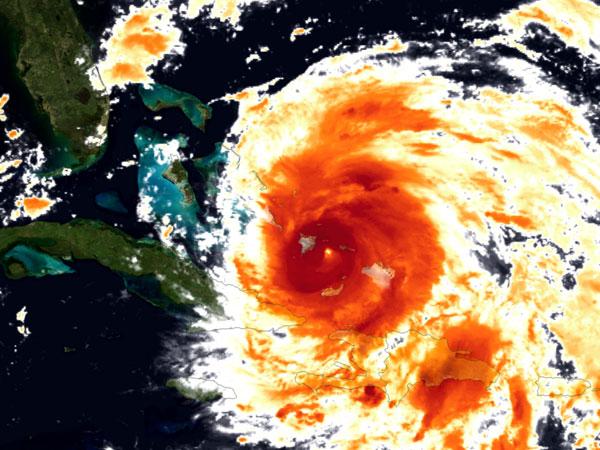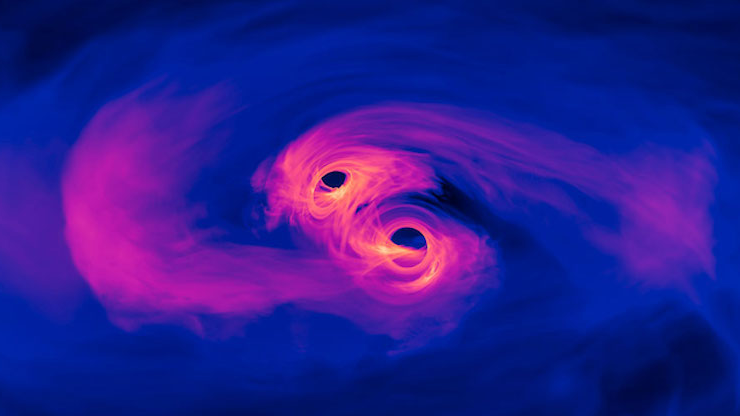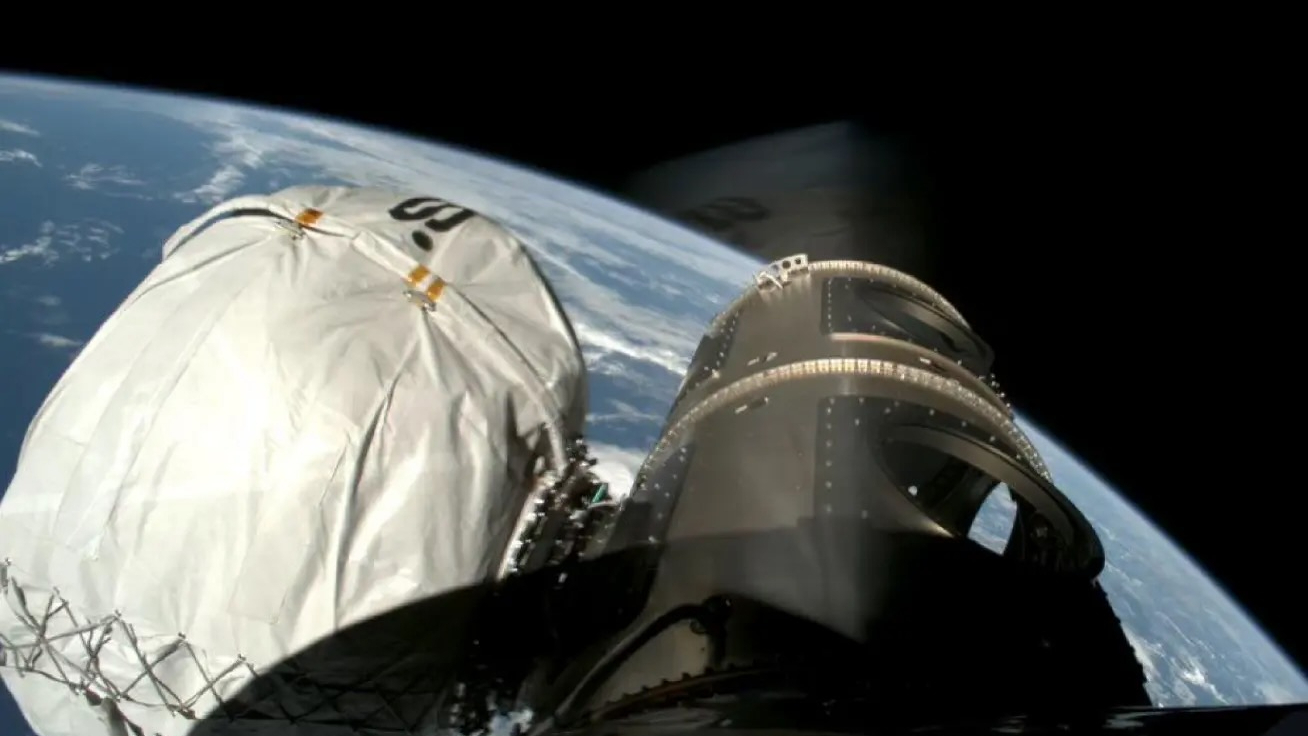Eye of Hurricane Irene Spotted from Space

The eye of Hurricane Irene, now a major storm with 115 mph (185 kph) winds, was spotted by infrared satellite sensors as the storm swirled over the Bahamas Wednesday (Aug. 24).
After a brief dip in its power Tuesday, Irene re-strengthened overnight and has now reached Category 3 status, making it the first major hurricane of the 2011 Atlantic season. Category 3 hurricanes on the Saffir-Simpson scale of hurricane strength have winds between 111 to 130 mph (178 to 209 kph). [See Hurricane Irene's Eye from space]
The last hurricane hunter reconnaissance mission also measured a central pressure of 966 millibars – a decrease from the previous flight, and further indication of the storms organization and intensification.
Irene's predicted path will take it up through the Bahamas, then up to the Outer Banks of North Carolina and along the coast of the Mid-Atlantic and Northeast states where it could finally make landfall. The storm would like weaken some in the cooler waters off the northern states, though it could still bring torrential rains and strong storm surge. [Related: Could New York City Handle a Hurricane?]
Rainfall in the Bahamas is expected to total between 6 to 12 inches (15 to 30.5 centimeters), with some isolated pockets of 15 inches (38 cm). Storm surge in the islands is expected to be as much as 7 to 11 feet (2 to 3.4 meters) above normal tide levels.
Irene is the first hurricane and first major hurricane for what has been forecast to be an active season. The National Oceanic and Atmospheric Administration (NOAA) updated its forecast on Aug. 4, predicting 14 to 19 named storms (which include tropical storms and hurricanes), seven to 10 hurricanes and three to five major hurricanes. An average Atlantic hurricane season will see 11 named storms, six hurricanes and two major hurricanes. August through October are the peak months of the Atlantic hurricane season.
This story was provided by OurAmazingPlanet, sister site to LiveScience.
Get the Space.com Newsletter
Breaking space news, the latest updates on rocket launches, skywatching events and more!
Join our Space Forums to keep talking space on the latest missions, night sky and more! And if you have a news tip, correction or comment, let us know at: community@space.com.
For the science geek in everyone, Live Science breaks down the stories behind the most interesting news and photos on the Internet, while also digging up fascinating discoveries that hit on a broad range of fields, from dinosaurs and archaeology to wacky physics and astronomy to health and human behavior. If you want to learn something interesting every day, Live Science is the place for you.










